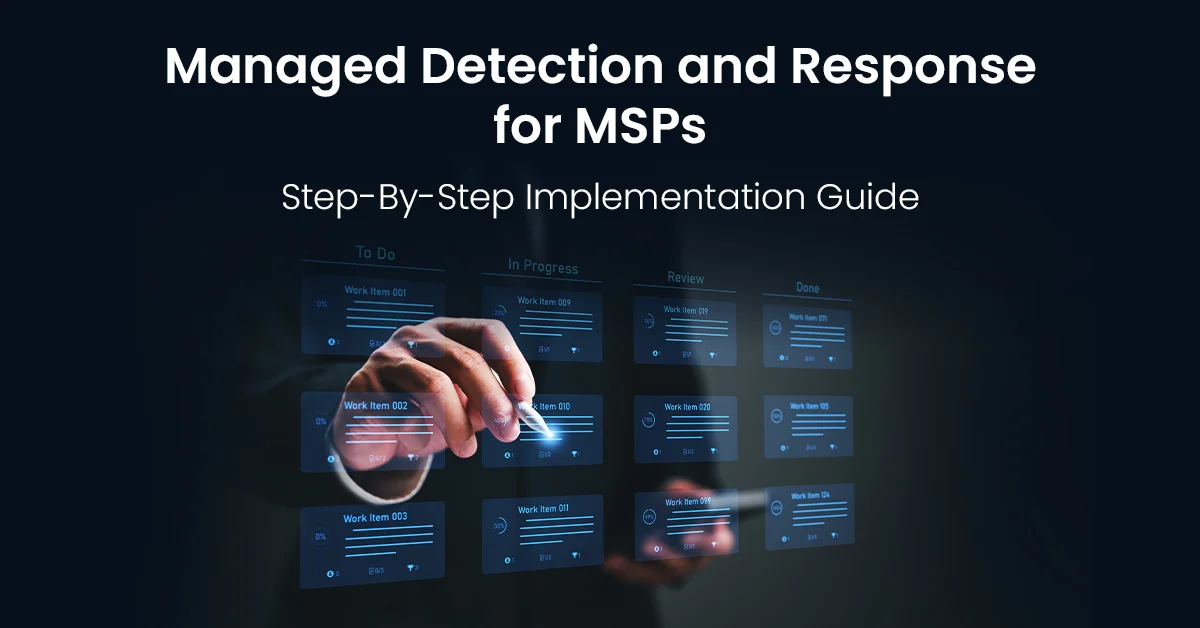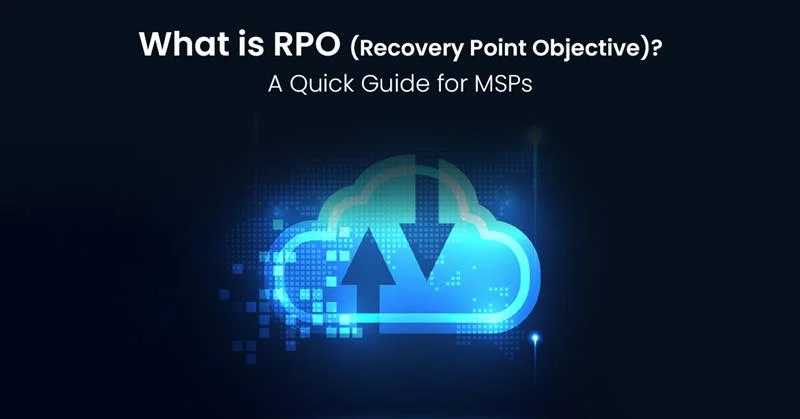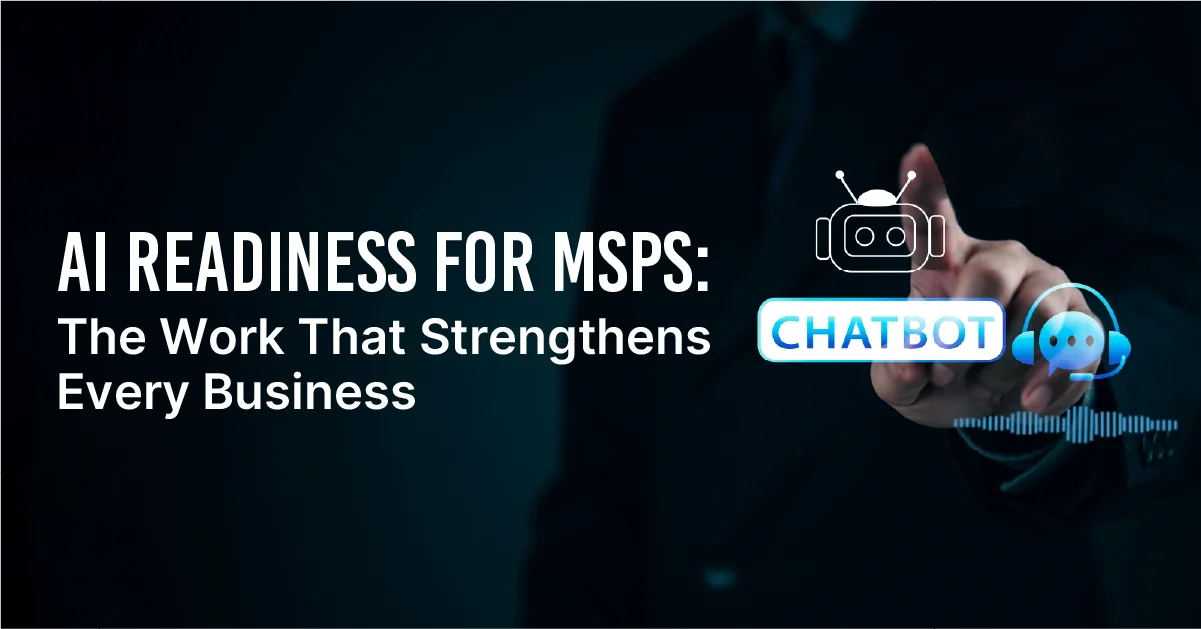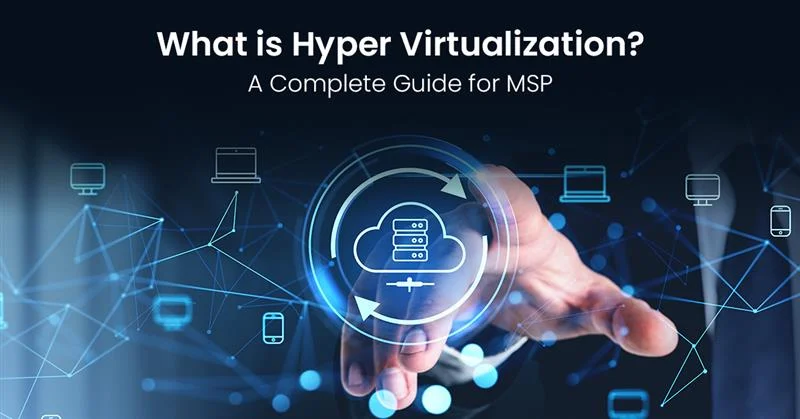Let’s cut to the chase. Your clients are getting hammered by sophisticated cyber threats, and they’re looking at you to keep them safe. The problem? Building an in-house security operations center is expensive, finding qualified security talent is nearly impossible, and the attack surface keeps expanding. That’s where Managed Detection and Response come in.
If you’re an MSP looking to deliver enterprise-grade security without breaking the bank, this guide walks you through exactly how to implement Managed Detection and Response. We’ll cover what it is, why you need it, and the practical steps to get it running across your client base. Plus, we’ll show you how SOC Services for MSP can transform your security offerings and give you a competitive edge.
What is Managed Detection and Response for MSPs?
Think of Managed Detection and Response as your 24/7 security team that never sleeps, never takes vacation, and never gets alert fatigue. It’s not just another tool you install and forget about. MDR combines cutting-edge technology with real human expertise to monitor, detect, investigate, and respond to threats across your clients’ entire IT environment.
Unlike traditional security tools that dump thousands of alerts on your desk, Managed Detection and Response provides you with a complete service. You get a dedicated Security Operations Center (SOC) team, threat analysts, and incident responders working around the clock to protect your clients.
Here’s what makes Managed Detection and Response different:
- Comprehensive visibility across endpoints, networks, cloud environments, and applications
- Expert analysts who investigate every alert and separate false positives from genuine threats
- Immediate response capabilities that contain threats within minutes, not hours or days
- Proactive threat hunting to find attackers hiding in your clients’ environments
- Continuous monitoring that provides 24/7/365 protection without gaps
How MDR Differs from EDR and Traditional Security Tools
EDR (Endpoint Detection and Response) is a powerful tool, but it’s just that; a tool. It sits on endpoints and collects telemetry. Someone still needs to monitor it, tune it, and respond to alerts. That someone is usually you, and you probably don’t have the bandwidth or specialized expertise to do it effectively.
Managed Detection and Response takes EDR and adds layers of capability:
- Broader coverage beyond just endpoints to include network traffic, cloud workloads, and identity systems
- Managed service delivery with expert SOC analysts monitoring and responding 24/7
- Integrated threat intelligence that helps identify emerging threats before they impact your clients
- Automated response playbooks that contain threats immediately without waiting for human intervention
Why MSPs Need Managed Detection and Response
The cybersecurity landscape changed dramatically in the past few years. Attacks became more sophisticated, compliance requirements got stricter, and clients started demanding round-the-clock protection. At the same time, the talent shortage in cybersecurity hit crisis levels.
Addressing the Cybersecurity Skills Gap
Here’s the reality: finding a qualified security analyst is tough. Finding someone who can hunt threats at 3 AM on a Sunday? Nearly impossible. The cybersecurity skills gap isn’t just about numbers; it’s about specialized expertise.
Managed Detection and Response solves this problem by giving you access to:
- Specialized SOC teams with certifications and years of experience analyzing threats
- Cyber threat intelligence that’s constantly updated with the latest attack techniques
- 24/7 coverage without the need to hire night shift staff or manage complex schedules
- Continuous training as the MDR provider invests in keeping their team’s skills current
Instead of competing for scarce talent, you’re tapping into a shared pool of experts. Your clients get enterprise-level security without you needing to become a staffing agency.
The Business Case: Scaling Security Operations Profitably
Implementing Managed Detection and Response across your client base costs a fraction of what a single breach would cost. Plus, you’re able to:
- Standardize security across all clients with consistent playbooks and response procedures
- Reduce alert fatigue by having experts handle the triage and investigation
- Improve margins by offering premium security services without proportionally increasing headcount
- Scale efficiently using multi-tenant platforms that manage hundreds of clients from a single pane of glass
Key metrics matter here. Mean Time to Detect (MTTD) and Mean Time to Respond (MTTR) directly impact the damage from an attack. Managed Detection and Response services typically achieve detection within minutes and response within 30 minutes for critical threats.
Meeting Client Expectations and Compliance Requirements
Your clients are facing increasing pressure from regulators, cyber insurance providers, and their own customers to demonstrate robust security practices. Many compliance frameworks require continuous monitoring and documented incident response capabilities.
Managed Detection and Response helps you deliver:
- 24/7/365 security coverage that meets compliance requirements for continuous monitoring
- Documented incident response with detailed reports of every security event
- SLA-backed performance with guaranteed response times and uptime commitments
- Regular reporting that demonstrates security posture to auditors and stakeholders
Key Components of Effective Managed Detection and Response
Building a successful MDR practice isn’t about flipping a switch. It requires understanding the core components that make Managed Detection and Response effective and ensuring they work together seamlessly.
Leveraging Threat Intelligence Feeds
Good Managed Detection and Response platforms don’t operate in a vacuum. They’re constantly ingesting cyber threat intelligence from multiple sources to stay ahead of emerging threats. This includes:
- Open source threat intelligence from community-driven projects and security researchers
- Commercial threat intelligence feeds that provide curated, high-confidence indicators
- Proprietary research from MDR providers who analyze attack patterns across their customer base
These feeds provide Indicators of Compromise (IoCs), Tactics, Techniques, and Procedures (TTPs), and contextual information about threat actors. When your Managed Detection and Response platform knows what to look for, it can spot threats faster and with greater accuracy.
AI and Automation Meet Human Expertise
Modern MDR platforms use machine learning for behavioral analytics, automated triage, pattern recognition, and predictive modeling. But here’s the critical part: AI amplifies human expertise; it doesn’t replace it. The most effective Managed Detection and Response services combine automated detection with expert analysis.
Continuous Monitoring and Threat Hunting
Managed Detection and Response goes beyond passive monitoring. It includes active threat hunting; the process of proactively searching for hidden threats that evade traditional detection methods. Your MDR team should provide 24/7/365 monitoring, proactive threat hunting, real-time alerting, and coordinated response.
How to Implement Managed Detection and Response in Your MSP
Ready to get started? Here’s your practical roadmap for rolling out Managed Detection and Response across your MSP practice.
Step 1: Assess Your Current Security Posture
Before you choose a provider or deploy anything, understand where you’re starting from:
- Inventory existing tools: What security solutions are already in place?
- Identify coverage gaps: Where do you have blind spots?
- Segment clients by risk: Which clients have the highest risk profiles?
- Determine budget constraints: What can each client tier afford?
Step 2: Select the Right MDR Provider
Look for providers that offer:
- Multi-tenant architecture designed specifically for MSP environments
- Comprehensive threat intelligence integration
- Flexible deployment models supporting various agent types
- White-label capabilities to deliver under your brand
- Proven integration with security tools you already use
Ask about average MTTD and MTTR, false positive handling, after-hours escalations, and integration capabilities.
Step 3: Deploy and Integrate
Deployment typically follows this pattern:
- Install sensors and agents across endpoints, servers, and network chokepoints
- Configure log collection from firewalls, cloud platforms, and identity systems
- Integrate with existing security tools
- Establish communication protocols with the MDR SOC team
- Test connectivity and data flow
Plan for a phased rollout starting with your most critical clients.
Step 4: Establish Response Playbooks
The technical deployment is only half the battle. You need clear processes:
- Define severity levels with specific criteria
- Create client-specific response protocols
- Set up notification chains
- Document remediation procedures
- Establish escalation paths
Step 5: Continuous Optimization
Managed Detection and Response isn’t “set it and forget it.” Continuous improvement is essential through regular tuning, quarterly reviews, threat intelligence updates, client reporting, and tracking KPIs like alert volume, false positive rate, MTTD, MTTR, and client satisfaction.
Overcoming Common Implementation Challenges
Even with a solid plan, you’ll face obstacles. Here’s how to navigate the most common ones and keep your MDR deployment on track.
-
Managing Alert Volume and False Positives
Quality Managed Detection and Response services address alert fatigue through advanced filtering, contextual analysis, continuous tuning, and human validation before escalating alerts to you.
-
Ensuring Seamless Integration Across Multi-Tenant Environments
Best practices include standardizing where possible, customizing where necessary, using multi-tenant architectures, and maintaining clear documentation of each client’s configuration.
-
Balancing Cost with Coverage
Create tiered offerings: basic monitoring for endpoints and email, standard coverage including network and cloud monitoring, and premium service with advanced threat hunting. Use risk assessments to guide clients toward the appropriate tier.
Strengthen Your MSP with IT By Design’s SOC Service
Your clients need managed detection and response, and you need a way to deliver it without building your own SOC.
IT By Design’s SOC service provides everything you need, a comprehensive MDR platform built for MSPs, advanced threat intelligence integration, AI-powered detection technologies, expert SOC analysts, proven integrations, flexible deployment models, and white-label options.
Schedule a call with us today to discover how our SOC Service can transform your security offerings and provide the 24/7 protection your client’s demand.
Take the first step toward delivering enterprise-grade security without the enterprise-level investment.








